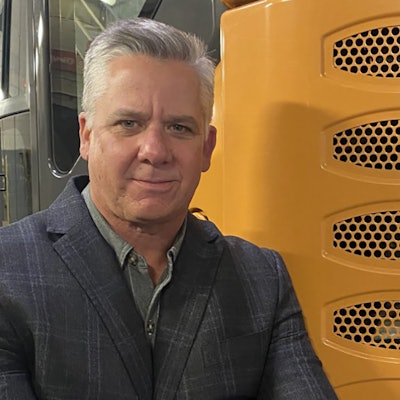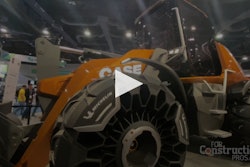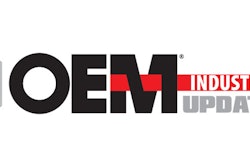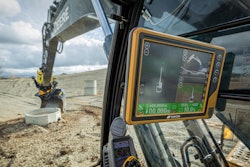
Each year, our State of the Industry issue looks at the top trends and technologies within the heavy equipment industries. We also dig into current and future market conditions, as well as regulations which may currently or in the coming years have an impact on how the industry will go about designing its equipment.
To get the best insights, we speak with executives from a variety of companies working in the industry—everyone from associations, to OEMs to component suppliers. Below are responses provided by Terry Dolan, Vice President – North America, CASE Construction Equipment.
Read all of this year's executive Q&As.
Global Markets, Government & Trade
How would passage of an infrastructure or other similar bill in the U.S.—or the equivalent in other countries—benefit the industry?
This year [2021] has been a strong year for equipment demand in construction, and that’s without the presence of a finalized infrastructure bill. We see there being an increase in demand yet again for 2022 — and that will only be bolstered further by the passage of an infrastructure bill here in the next few months. As such, we see continued, multi-year strength in demand for construction equipment barring any additional major global disruption or emergency.
Supply Chain Disruptions
How have supply chain disruptions impacted your business over the past year?
Like every manufacturer, we are dealing with increased demand matched with a challenging supply chain. With every challenge comes opportunity, however, and we’ve looked at each plant for ways to increase our production output even with the realities of the supply chain. We’ve actually increased our purchasing staff to become more agile in identifying additional supply sources. We’ve also done our best to absorb premium prices on components to minimize production delays and secure inventory to continue production. We’re incurring higher road and air freight costs to expedite material from our suppliers to the plants. We are more aggressive on labor force recruitment and minimizing plant absenteeism. And it’s working. We are seeing record daily production rates at some plants, and we’ve approved additional measures that will further improve production this year and into next. We are very aggressively and deliberately attacking the supply chain and production issues to meet the demands of our customers and the dealer network.
Diesel, Electric & Other Power Alternatives
How, if at all, do you see the role of diesel engines evolving in the coming years?
Diesel engines will always have a role in heavy equipment manufacturing, and in specific applications and workplaces. We do not see diesel and alternative fuels as an either/or proposition. We are focused on both improving the power, efficiency and performance of our diesel products, while also exploring new ways to bring alternative-powered construction equipment to the market.
What alternative fuels do you foresee entering the heavy equipment industry in the next 5-10 years?
In the U.S., we see electrification as being the dominant alternative, and something that we will continue to see growth in for years to come — just as we’ve done with the CASE 580 EV electric backhoe loader, the first customer units of which were delivered early this year.
How will electrification—or other alternative energy/power systems—continue to advance in the heavy equipment industry?
Like everything else, it will come down to customer adoption and demand, technology advancement and supply/availability issues. We foresee certain segments, such as utilities and public works, where electrification will be embraced fully and at higher rates. Other markets, specifically in extreme remote/rural locations, will continue to rely on diesel. Acceptance will grow. The technology will become more proven in the field with additional years of testing and analysis. Batteries will become smaller and systems will become easier to integrate within the framework of the machines that contractors already use and rely on. As all of these things happen, we will see demand and acceptance grow exponentially.
What new emissions regulations do you see on the horizon, and how might they impact future product development?
As a global manufacturer, we are already aligned with and ahead of the most demanding emissions regulations throughout the world. As those regulations change in the North American market, we will be ahead of it and already implementing the solutions into our equipment.
Data, IoT & Connectivity
What will be the best use cases for the Internet of Things (IoT) and data in the coming years?
Equipment buyers are more in tune with their businesses and the role that data plays every day in helping make decisions that will improve their business. The technologies, from machine control to telematics, are becoming more accessible and easy to use every day. As this happens, and as younger generations who are more comfortable with technology begin to take more leadership positions in businesses that buy equipment, you will see a larger focus on connectivity and data. Improving fleet management. Making smarter acquisition and allocation decisions. While there is still a lot of earned knowledge driving the industry, it’s more and more important every day that decisions are being made that are not only supported by data, but that can show improvements via data within the desired timeframe.
What potential do you see in the use of artificial intelligence and augmented/virtual reality—both for the design and manufacture of products as well as within equipment?
We’re already using it extensively in the design and engineering of our equipment, and in this moment where it’s harder and harder to get raw materials, or devote manufacturing resources to physical media, the ability to get further along in the process without having to build out full prototypes will continue to accelerate innovation among research, design and engineering teams.
What advancements do you see on the horizon for connectivity and machine learning in the next decade?
Data and cellular networks continue to improve. Technology integrations, such as the new factory-fit machine control options we’ve introduced on excavators and dozers, make adoption and use easier — and ensures that the right technology is matched up with the right machine and tested/calibrated at the factory. It’s becoming easier to collect, transmit and present a much larger volume of data in ways that are intuitive and drive real improvements. The talent in the field is becoming more familiar with the technology and even advocating for it as it helps alleviate labor concerns. All of these factors align to encourage acceptance and further development for heavy equipment. And we will see the further development of autonomous technologies and machine learning to address labor shortages and allow business owners to accomplish more with the staff they already employ.
What challenges remain for the continued adoption of data, IoT and connectivity related technologies or systems?
Wariness of new technology and the unknown remains a big factor. There are also businesses and operators who believe they can succeed without it – and in certain applications, that may be true. But with margins as tight as they are when bidding new work, and seeing the gains these technologies provide to competitive contractors and businesses — we believe we’ll continue to see adoption increase.
What role will telematics continue to play in the heavy vehicle and equipment industry?
Telematics and continually improving modem technology provide a great foundation for the really cool things we’re seeing in fleet management technology now. This includes the increasing availability of remote diagnostics, remote software updates, and collaborative fleet management solutions like the CASE Uptime Center will transform equipment service relationships in a way that favors fleet health, performance and uptime. And ultimately lower total cost of ownership. As OEMs have the ability to aggregate more data from service records, general maintenance, etc., we can utilize this for more predictive maintenance to insure improved uptime for customers.
Challenges & Opportunities
What are the biggest challenges facing the industry currently, or do you see the industry facing in the coming years?
Labor – both in the workforce and on the diesel technician side — will continue to be a challenge. Supply chain will continue to affect every aspect of the construction industry, from the materials used in construction to the raw materials we use in the manufacturing process. And while there is a lot to be optimistic about, there remains the uncertainty surrounding the global pandemic and what effect that will have on business and the economy.
What are some of the biggest opportunities you see in the industry?
While we are in an extremely unique period of time for this industry, there are many signs for continued optimism, not just for 2022, but beyond. Continued demand for equipment. A backlog of work that shows no signs of slowing down any time soon will continue driving that demand. And an infrastructure bill here in the United States that promises to generate even more demand.
Additionally, with the challenges of labor shortages, increasing fuel charges, etc., I believe you will see a more rapid pace of design that incorporates more electrification in products and automation to assist contractors with challenges of identifying and hiring skilled laborers. Machine control is just a start where through intelligence built into the units the machine can assist the operator in performing key tasks more effectively.
Are there any technologies or trends which you are currently excited about in the heavy-duty vehicle industry, or most looking forward to seeing in the coming years?
We’ll continue seeing more intuitive executions of technology in equipment that make it easier for adoption and success. Electrification is going to remain one of the biggest topics for years to come. And I sense that, while labor is always going to be a challenge, we’re seeing the beginnings of a real movement to attract youth and new blood to the industry — and many of these advances in technology will help accomplish that.
We’ll also continue to see the digital transformation that the industry is embracing more and more every day. CASE and CNH Industrial are fully embracing this digital transformation, as evidenced by CNH Industrial’s recent acquisition of Raven Industries. The matching of Raven’s technologies and CNH Industrial’s growing product portfolio will transform many earthmoving businesses through greater productivity, intelligence and efficiency.
What do you think will be the biggest change to occur in the heavy-duty vehicle and equipment industries in the next decade?
Demand, acceptance and deployment of alternatively powered equipment — particularly electrified — will remain the biggest technological push through the end of the decade. The labor market and global health will be two larger mainstream issues that have lasting effects on our industry. And the challenges of the supply chain we’re facing now will drive new and more efficient ways of doing business on a global scale. The industry will continue to embrace total digital transformation and automation of processes that help address operator performance and labor shortages, which we’ll continue to embrace through new capabilities made possible by CNH Industrial’s recent acquisition of Raven Industries.




















